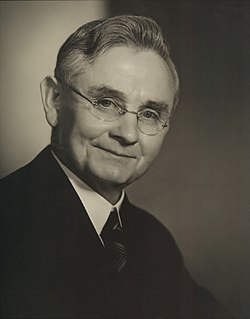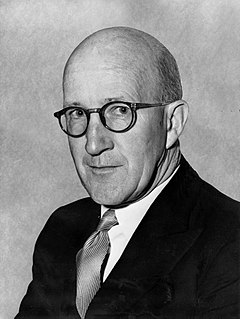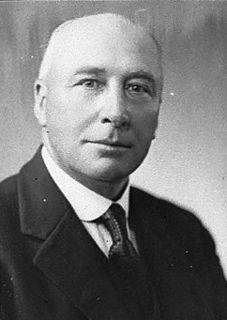The New Zealand Labour Party, or simply Labour, is a centre-left political party in New Zealand. The party's platform programme describes its founding principle as democratic socialism, while observers describe Labour as social-democratic and pragmatic in practice. The party participates in the international Progressive Alliance.

Michael Joseph Savage was a New Zealand politician who served as the 23rd Prime Minister of New Zealand, heading the First Labour Government from 6 December 1935 until his death.

Sir Sidney George Holland was a New Zealand politician who served as the 25th Prime Minister of New Zealand from 13 December 1949 to 20 September 1957. He was instrumental in the creation and consolidation of the New Zealand National Party, which was to dominate New Zealand politics for much of the second half of the 20th century.

Socialism in New Zealand had little traction in early colonial New Zealand but developed as a political movement around the beginning of the 20th century. Much of socialism's early growth was found in the labour movement.

Sir Walter Nash was a New Zealand politician who served as the 27th Prime Minister of New Zealand in the Second Labour Government from 1957 to 1960. He is noted for his long period of political service, having been associated with the New Zealand Labour Party since its creation.

Sir Arnold Henry Nordmeyer was a New Zealand politician. He served as Minister of Finance (1957–1960) and later as Leader of the Labour Party and Leader of the Opposition (1963–1965).

John Alfred Alexander Lee was a New Zealand politician and writer. He is one of the more prominent avowed socialists in New Zealand's political history.

Adam Hamilton was a New Zealand politician. He was the first non-interim Leader of the National Party during its early years in Opposition.

Clarence Farrington Skinner, commonly known as Jerry or Gerry Skinner, was a Labour politician from New Zealand, Deputy Prime Minister of New Zealand between 1957 and 1960, and a minister from 1943 to 1949 and 1957 to 1960 in the First and Second Labour governments.

Frank Langstone was a New Zealand Member of Parliament, Cabinet Minister and High Commissioner to Canada.

Daniel Giles Sullivan was a New Zealand Member of Parliament, Cabinet Minister and Mayor of Christchurch.

William Edward Parry was a New Zealand Minister and trade unionist.

David Wilson was a New Zealand politician of the Labour Party. Through membership of the Legislative Council, he was a minister in the First Labour Government.
The Auckland West by-election of 1940 was a by-election for the electorate of Auckland West held on 18 May 1940 during the 26th New Zealand Parliament. The by-election resulted from the death on 27 March 1940 of the previous member Michael Joseph Savage, the revered prime minister whose terminal illness had not been made public.
The New Zealand Labour Party leadership election, 1940 was held on 4 April 1940 to choose the fourth leader of the New Zealand Labour Party. The election was won by Wellington Central MP Peter Fraser.

The 1951 New Zealand Labour Party leadership election was held on 17 January to choose the fifth leader of the New Zealand Labour Party. The election was won by Hutt MP and incumbent deputy-leader Walter Nash.

The 1954 New Zealand Labour Party leadership election was held on 23 June 1954 to determine the future leadership of the New Zealand Labour Party. The election was won by Hutt MP Walter Nash, the incumbent leader.
The 1990 New Zealand Labour Party leadership election was held on 4 September to determine the leadership of the New Zealand Labour Party. The leadership was won by Christchurch North MP Mike Moore.

The 1989 New Zealand Labour Party leadership election was held to determine the leadership of the New Zealand Labour Party. The leadership was won by Christchurch Central MP Geoffrey Palmer, who had been Deputy Leader the party since 1983.

In April 1912 and July 1913, two "unity conferences" were held to discuss and determine the future of organised labour in New Zealand. The events mainly centred around the debate over whether industrial action or political activity should be the means of achieving the aims of workers and additionally to unite the "moderate" and "militant" factions within the labour movement. Whilst neither conference fully unified the labour movement, it laid a framework of co-operation that would later assist during the creation of the current New Zealand Labour Party in 1916.


















